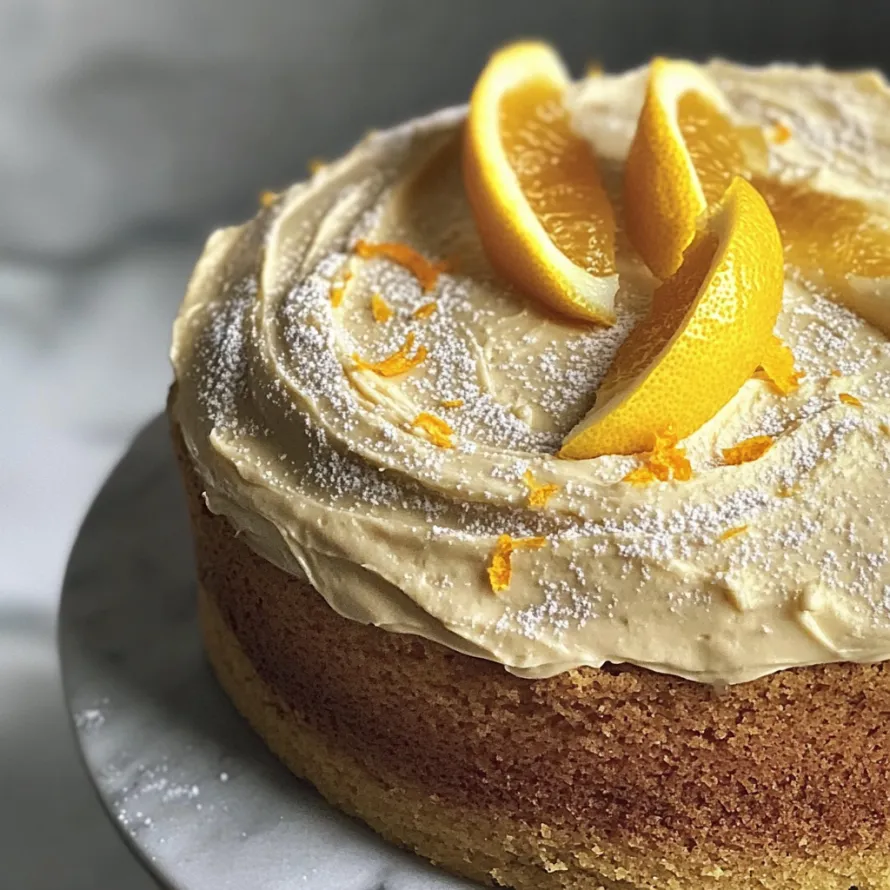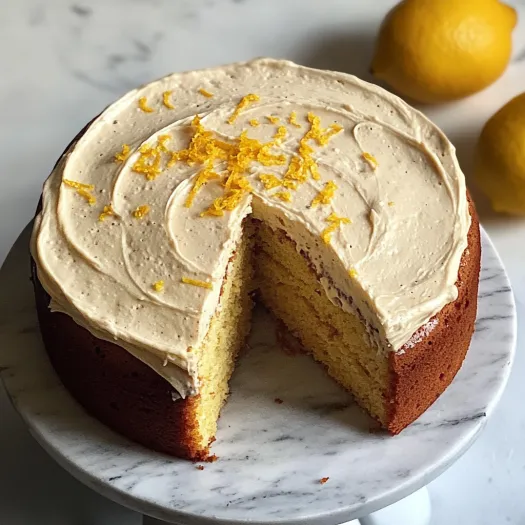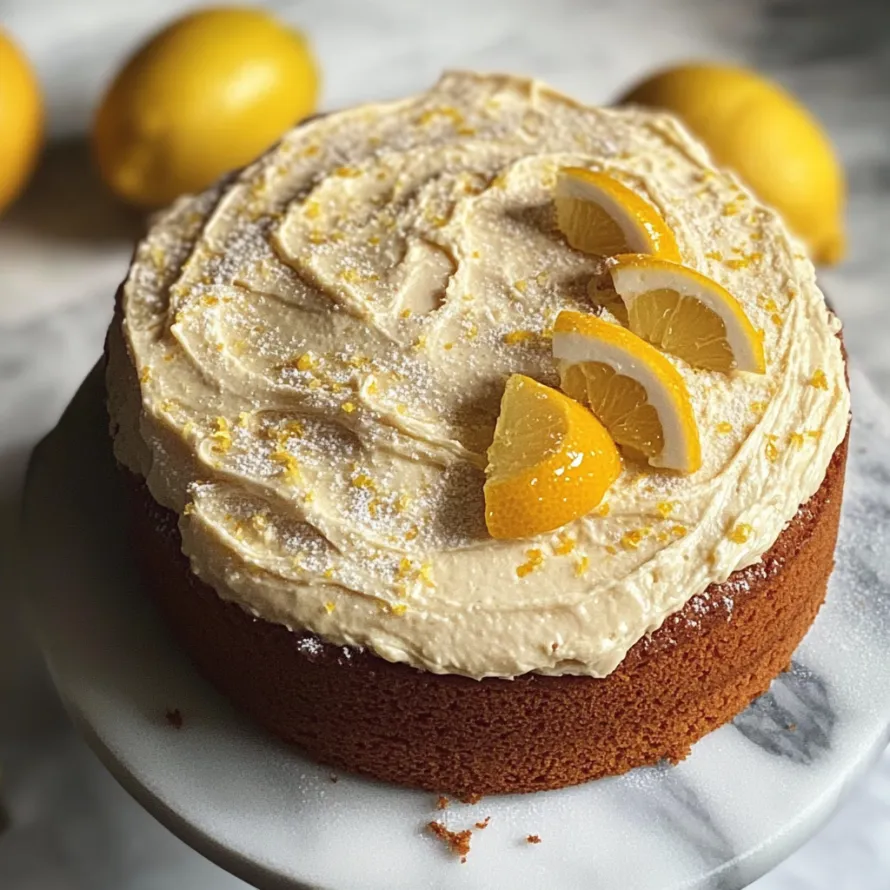 Pin
Pin
This cake combines humble kitchen ingredients into an upscale treat that brings together nutty, citrusy, and sweet tastes. Guests always look surprised when I tell them olive oil is what makes the cake so wonderfully soft with that slight fruity background note.
I first made this cake when my mom had her birthday after coming home from Italy. The bright citrus reminded her of sunshine in the Mediterranean, and now we can't have a family celebration without it.
Ingredients
- Granulated sugar: Mixed with citrus zest to create a fragrant base for flavor
- Olive oil: Keeps everything moist with a light fruit taste; grab a decent extra virgin for best flavor
- Sour cream: Makes the cake super soft and adds a bit of tang against the sweetness
- Fresh lemon and orange zest: Give the whole cake a lift; try to find fruits with smooth skins for most flavor
- Butter: Used in the frosting; needs to be slowly browned to get that amazing nutty flavor
- Powdered sugar: Always run it through a sifter so your frosting turns out completely smooth
Step-by-Step Instructions
- Prepare the Sugar Infusion:
- Start by rubbing the citrus zests into your sugar with your fingers. This gets all the essential oils out and makes amazingly scented sugar that'll flavor your whole cake. The sugar will get a bit damp and lumpy from the oils, which is exactly right.
- Create the Batter:
- Mix the eggs, sour cream, olive oil, vanilla, and salt with your infused sugar for two full minutes. This puts air in and blends all the wet stuff properly. You'll notice it gets lighter colored and a bit fluffy. Don't cut this mixing time short.
- Incorporate Dry Ingredients:
- Gently fold your sifted flour, baking soda, and baking powder into the wet mix. Use a spatula and scoop from the bottom to top, turning your bowl as you go. Only mix until you can't see dry flour anymore. A few lumps from air pockets are totally fine.
- Bake with Precision:
- Put your batter in the pan and bake for 30 minutes before turning the pan around for even browning. This cake gets a lovely golden outside while staying super moist inside. Turning it helps cook it evenly. It's done when a toothpick comes out clean from the middle.
- Brown the Butter:
- Keep a close eye on your butter as it changes. First it melts, then bubbles a lot, then gets quiet before the good stuff happens. The milk bits separate and toast at the bottom. Keep gently stirring until you see little golden brown bits and smell that nutty scent. This takes about 5-8 minutes from start to finish.
- Create Luxurious Frosting:
- Let the browned butter cool until you can spread it, then mix with sifted powdered sugar and vanilla. It should be smooth but thick enough to work with. Add cream bit by bit until it feels silky and holds its shape but isn't too stiff.

I think the brown butter frosting really makes this cake stand out. I found out how amazing it was by mistake when I overcooked some butter for another dish and used it anyway. The toasty flavor goes so well with olive oil that I now brown butter for everything from cookies to pasta dishes.
The Magic of Citrus Infusion
Rubbing citrus zest right into sugar before adding anything else makes such a big difference in how the flavor spreads. The sugar grains soak up all the oils from the zest. This way, the citrus taste gets into every bite instead of just showing up in spots. You can switch up your citrus based on what's in season: try bergamot, Meyer lemon, or blood orange for amazing results.
Storage and Make-Ahead Tips
This cake actually tastes better after a day as all the flavors mix together. You can bake it up to two days before you need it and keep it wrapped tight at room temp. The frosting can be made a day early and kept in the fridge; just let it warm up and stir it again before you spread it. After frosting, keep the cake in the fridge but take it out about 30 minutes before serving so it tastes and feels just right.
Serving Suggestions
For a simple brunch, cut thin slices and serve with fresh berries and coffee. When you want to get fancy, I like to top it with candied citrus pieces, fresh herbs like thyme or rosemary, or just a light sprinkle of powdered sugar. This cake goes really well with sweet wines, especially Vin Santo from Tuscany or a late harvest Riesling.

With its wonderful mix of flavors and pretty look, this olive oil cake will soon be your favorite dessert for any gathering.
Recipe Q&A
- → Is olive oil replaceable in this cake?
Olive oil has a fruity flair that makes this cake unique, but if needed, you can swap it for neutral options like canola or vegetable oil. Just know, you’ll miss out on its signature taste, which plays a big part in the flavor profile.
- → How can I tell my butter is done browning?
You'll know it's ready when your butter has a warm, nutty smell and turns a golden-amber shade, with little brown flecks at the bottom. Keep an eye on it as it cooks—it can burn quickly once browned. The sizzling will quiet and the aroma will deepen when it’s perfect.
- → Can I prepare this cake beforehand?
Absolutely! Baking the cake a day or two early lets the flavors meld beautifully. Store the unfrosted cake wrapped tightly at room temp. The frosting lasts a day in the fridge—just let it soften and whip it again before using.
- → Which olive oil is best for baking?
Choose an extra virgin olive oil you’d enjoy tasting straight. Medium-bodied or fruity ones fit nicely, complementing the cake's sweetness. Avoid strong, bitter oils—they could overpower instead of enhancing the flavors.
- → How do I store leftovers?
Leftovers stay fresh for up to 5 days in an airtight container in the fridge. Let slices come to room temperature before enjoying. The unfrosted cake can also go in the freezer for up to 3 months.
- → What if I skip the citrus zest?
The zest provides a refreshing zing that balances the richness of the other ingredients. Skipping it means losing some of the cake's complexity. If you're in a pinch, try mixing in a bit of almond extract or even orange blossom water instead.
